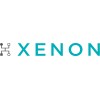
A Study to Evaluate the Pharmacodynamic Activity of E2730 in Adult Participants With Photosensitive...
Photosensitive EpilepsyThe primary purpose of the study is to assess the pharmacodynamic (PD) activity of E2730 as measured by suppression of epileptic photoparoxysmal response (PPR) in the participant's most sensitive eye condition in participants with photosensitive epilepsy.

Lexapro for Major Depression in Patients With Epilepsy
Major DepressionEpilepsyThe primary objective will be to pilot the use of escitalopram for the treatment of major depression in patients with epilepsy. The secondary objectives will be to determine effect sizes on scales measuring depressive symptoms, physical symptoms, psychosocial function and quality of life, and to evaluate safety in the population of patients with epilepsy. These results will be used to evaluate the possibility of a future double-blind, placebo controlled RCT of escitalopram for the treatment of major depression in patients with epilepsy.

A Double-blind, Randomized Conversion to Monotherapy Study to Evaluate the Efficacy and Safety of...
EpilepsyAntiepileptic drugs (AEDs) are the main treatment for epilepsy; however, only a limited number of AEDs are approved for use as monotherapy. The objective of this study is to evaluate the efficacy of Brivaracetam (BRV) in the conversion of partial onset seizure patients from combination treatment to monotherapy

Open-Label Extension Study of the Phase 3 VRX-RET-E22-302 Double-Blind Trial. 115097
EpilepsyThis Phase 3 trial is an open-label extension study of the placebo-controlled, double-blind VRX-RET-E22-302 trial. Patients who have completed the VRX-RET-E22-302 trial and who meet inclusion and exclusion criteria will be treated with 600-1200 mg/day of retigabine as an adjunct therapy to their current antiepileptic drugs (AEDs) or vagal nerve stimulation. Treatment will be continued until the subject withdraws from the study or until the program is discontinued. Patients will be recruited from 55-60 sites in Europe, Israel, Australia, and South Africa. The primary objective of the study is to evaluate the safety and tolerability of long-term therapy with retigabine administered as adjunctive therapy in adult epilepsy patients with partial-onset seizures, who completed the double-blind Study VRX-RET-E22-302. Secondary objectives are: to evaluate efficacy of long-term treatment with retigabine and patient quality of life and to evaluate whether retinal pigmentation, unexplained vision loss, pigmentation of non-retinal ocular tissue, and discoloration of nails, lips, skin or mucosa change over time after discontinuation of retigabine.

A Study of the Safety and Efficacy of Depakote Sprinkle Capsules in the Treatment of Partial Seizures...
Partial Seizure DisorderThe purpose of this study is to compare the safety and efficacy of two concentration ranges of valproate using Depakote Sprinkle Capsules as adjunctive therapy in the treatment of partial seizures, with or without secondary generalization, in children 3-10 years.

Randomized Controlled Trial on Cardiovascular Exercise in Uncontrolled Epilepsy:
Refractory EpilepsyThis is an open-label randomized controlled tria testing if an improvement in cardiovascular fitness can improve quality of Life and reduce seizure frequency in patients with refractory epilepsy.. Before the intervention each subject will undergo an evaluation of baseline cardiovascular fitness. Patients will be randomized into two groups One group will listen to a relaxation tape 5 days per week for 6 months and the other group will receive a ergometric cycle and perform a predetermined level of exercise per day , 5 days per week for 6 months. Randomization will be conducted an external randomization center based on a sequence of random numbers. Changes in concomitant antiepileptic drugs (AED) treatment during the study will be minimized, and restricted to AED changes deemed to be necessary to address AED-related toxicity. Medical examination; body weight; fitness test, including ECG and BP measurements, seizure frequency; adverse effects (unstructured interview); details of concomitant concomitant treatment, mood assessment by using the Hospital Anxiety and Depression Scale-Anxiety (HADS); health related quality of life (RAND-36), E4-data downloading, will be done at baseline and after 6 months Primary endpoint: Proportion of patients with at least 50% seizure reduction Secondary endpoints: Median percent reduction in seizure frequency, HADS score, RAND-36 score, fitness score; adverse events, changes in concomitant AED treatment, E4 data .

XEN496 (Ezogabine) in Children With KCNQ2 Developmental and Epileptic Encephalopathy
EpilepsyEpilepsy in Children6 moreTo investigate the potential antiseizure effects of adjunctive XEN496 (ezogabine) compared with placebo in children with KCNQ2 Developmental and Epileptic Encephalopathy (KCNQ2-DEE).

A Prospective Cohort Study on the Comorbid Depression in Patients With Newly-diagnosed Epilepsy...
EpilepsyEpilepsy is a chronic brain disease with recurrent seizures and the comorbidity of psychiatric diseases are very common. The prevalence of depression in patients with refractory epilepsy is about 60%. However, the early diagnosis is usually difficult due to the unclear mechanism and untypical clinical symptoms, and there are no extremely effective treatments for depression in patients with epilepsy until now. In this prospective, multi-center, cohort study, we aim to investigate and screen two different types of depression ("cognitive" and "somatic") in patients with epilepsy by using the combination of regular moods evaluating scales and heart rate variability instrument. The intervening methods of combining transcranial direct current stimulation (tDCS) and serotonin re-uptake inhibitors (SSRIs) are used to treat the patients with comorbidity of epilepsy and depression.

A Multi-center RWS of Perampanel as an add-on Treatment for Epileptic Seizures in Chinese Children...
EpilepsyThis study is a multi-center, real-word clinical trial. The purpose of this study is to evaluate the safety and effectiveness of perampanel as an add-on treatment for epileptic seizure, and to find the effective maintenance and maximum dose in Chinese children. The enrolled subjects were epilepsy patients between 2 and 12 years of age who had failed clinical treatment with 1-3 anti-epileptic drugs (AEDs) with the optimal dose and course of treatment and needed additional treatment. The study was a real-world prospective clinical study, and the initial and maximum doses of perampanel were individualized by neurologists according to the patient's clinical situation.

Transcranial Magnetic Stimulation for Epilepsy
EpilepsyThe goal of the present clinical trial is to determine whether low frequency (0.5 Hz) rTMS can induce long term depression in epileptogenic cortex and thus suppress cortical excitability at the epileptic focus.
